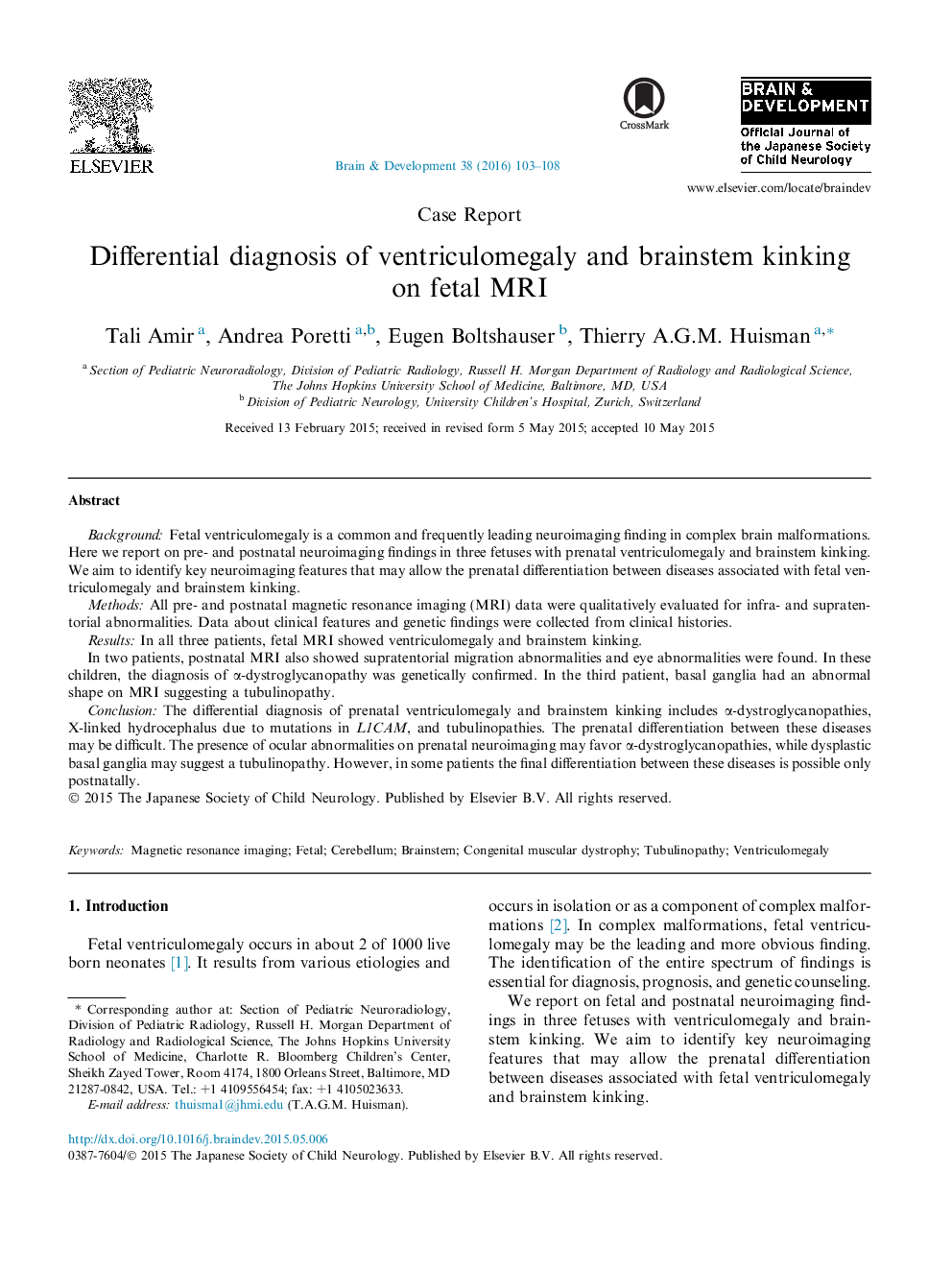| Article ID | Journal | Published Year | Pages | File Type |
|---|---|---|---|---|
| 3036750 | Brain and Development | 2016 | 6 Pages |
BackgroundFetal ventriculomegaly is a common and frequently leading neuroimaging finding in complex brain malformations. Here we report on pre- and postnatal neuroimaging findings in three fetuses with prenatal ventriculomegaly and brainstem kinking. We aim to identify key neuroimaging features that may allow the prenatal differentiation between diseases associated with fetal ventriculomegaly and brainstem kinking.MethodsAll pre- and postnatal magnetic resonance imaging (MRI) data were qualitatively evaluated for infra- and supratentorial abnormalities. Data about clinical features and genetic findings were collected from clinical histories.ResultsIn all three patients, fetal MRI showed ventriculomegaly and brainstem kinking.In two patients, postnatal MRI also showed supratentorial migration abnormalities and eye abnormalities were found. In these children, the diagnosis of α-dystroglycanopathy was genetically confirmed. In the third patient, basal ganglia had an abnormal shape on MRI suggesting a tubulinopathy.ConclusionThe differential diagnosis of prenatal ventriculomegaly and brainstem kinking includes α-dystroglycanopathies, X-linked hydrocephalus due to mutations in L1CAM, and tubulinopathies. The prenatal differentiation between these diseases may be difficult. The presence of ocular abnormalities on prenatal neuroimaging may favor α-dystroglycanopathies, while dysplastic basal ganglia may suggest a tubulinopathy. However, in some patients the final differentiation between these diseases is possible only postnatally.
